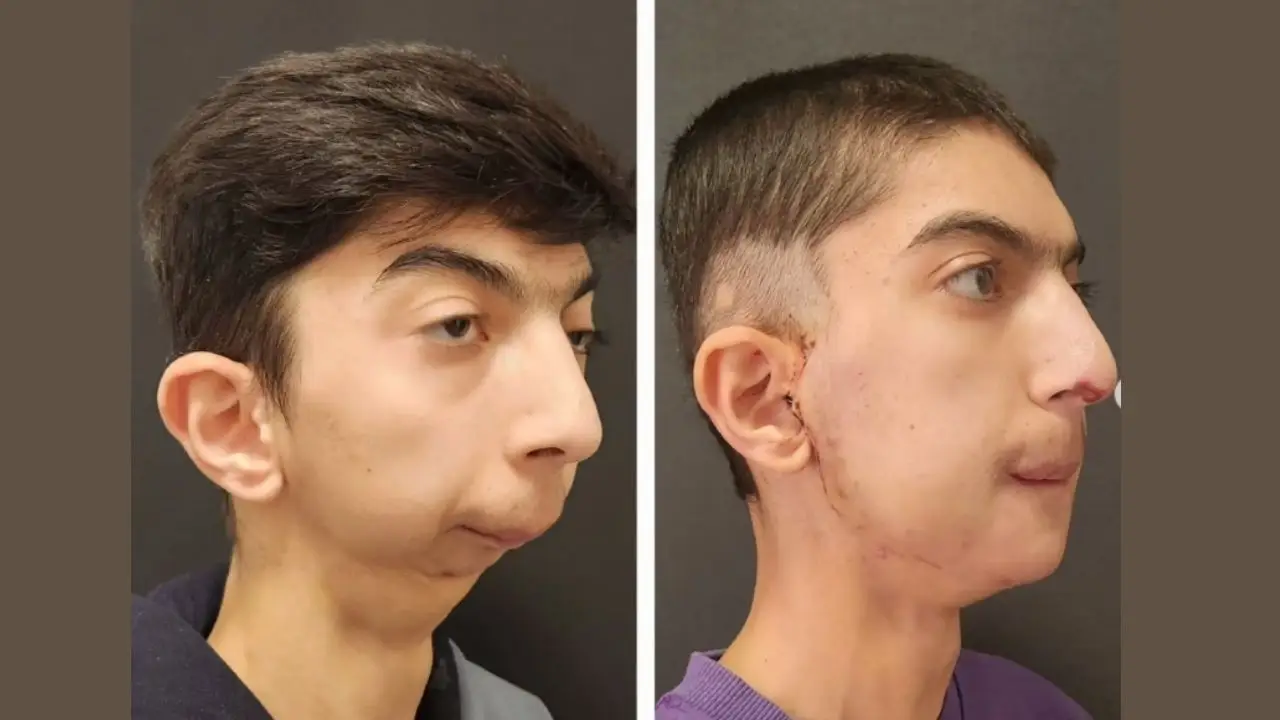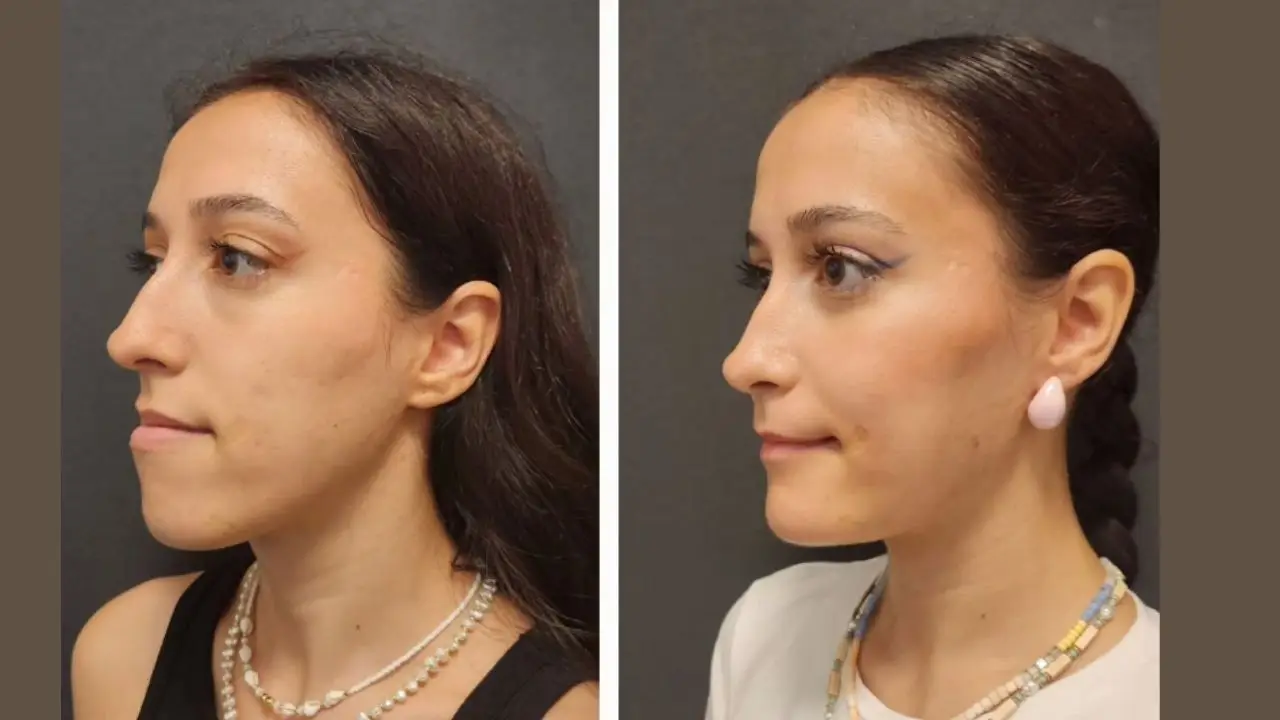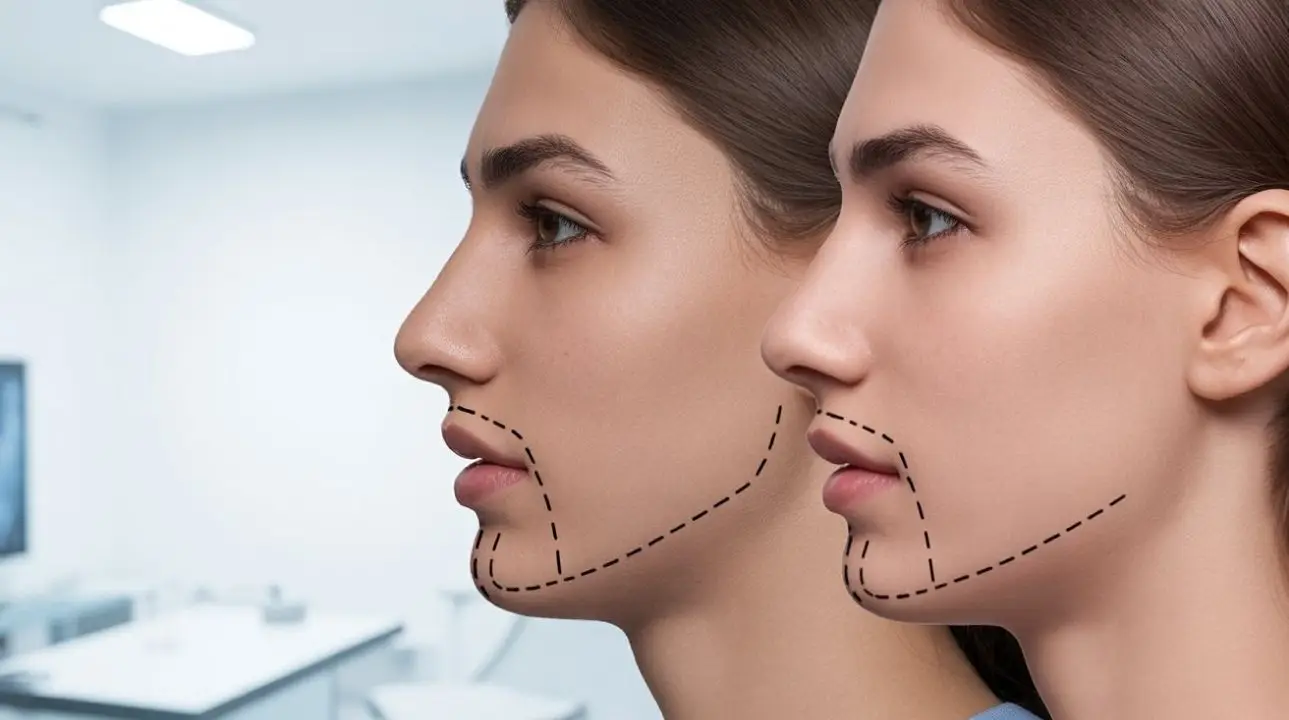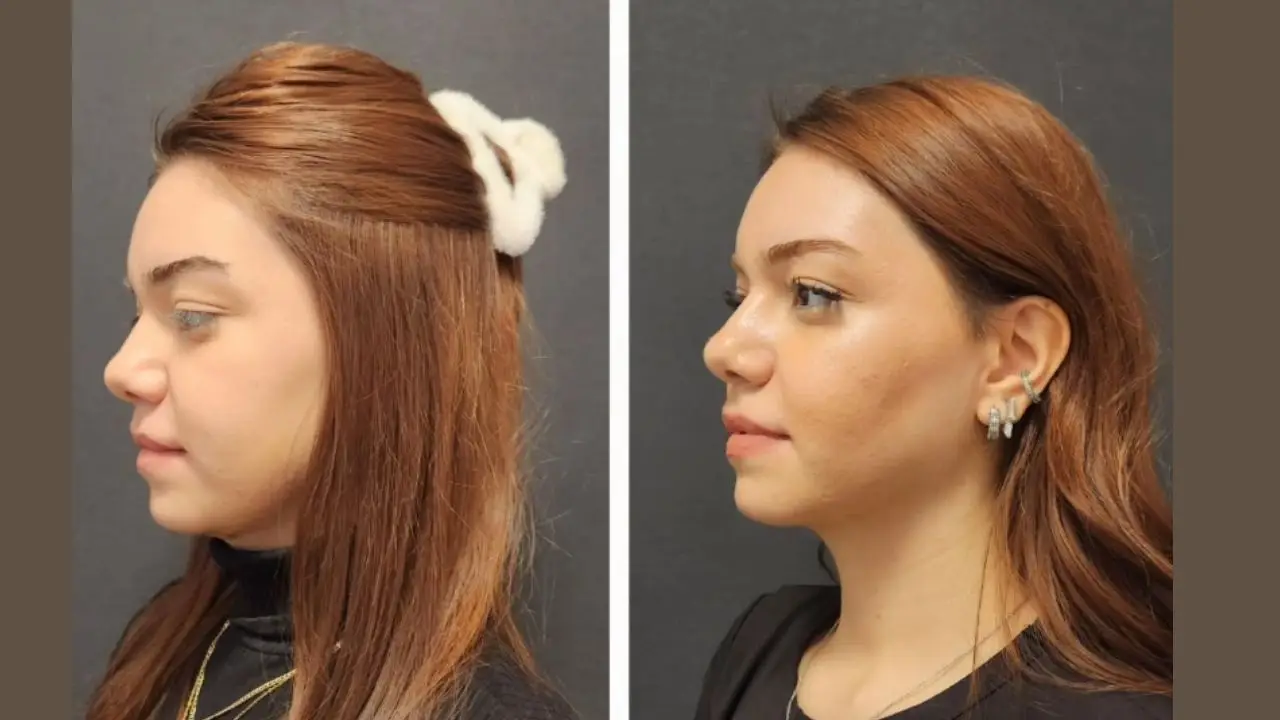Pre- and post-operative stages of a chin implant procedure directly affect the final outcome. Before the surgery, patients should refrain from eating and drinking, maintain realistic expectations, and strictly follow their surgeon’s instructions. After the operation, keeping the head elevated, applying cold compresses, and avoiding heavy physical activities are important for optimal recovery.
Another critical factor in the chin implant before after process is choosing the right surgeon. This advanced procedure requires a high level of expertise. To achieve the best possible results, patients should consult with an experienced maxillofacial surgery specialist. Professor Dr. Celal Çandırlı is one of the leading names in this field, known for his experience and precision. You can contact him at any time for a consultation about chin implant surgery.
What Is a Chin Implant Before After?
A chin implant is a procedure performed by orthognathic and maxillofacial surgery specialists to restore volume, reshape the chin, and balance the overall facial profile. These implants come in various types, addressing different anatomical and aesthetic needs. They are made from materials such as silicone, Medpor, and titanium.
For many individuals, the chin implant before after process is viewed mainly from an aesthetic perspective. However, this procedure also helps resolve certain functional issues related to jaw structure and bite alignment.

Planning the Before and After Chin Implant Process
As one of the common facial implant procedures, chin implant surgery requires meticulous planning to achieve the desired outcome. Since every patient’s facial structure is unique, the surgical plan must be personalized. Key factors to consider include:
- Detailed orthodontic and radiological assessment of the patient’s teeth and jaw structure.
- Bone density measurement, as some implants need to be anchored directly into the bone.
- Evaluating the patient’s general health to ensure there are no contraindications for anesthesia or surgery.
Types of Chin Implants
Understanding the different types of implants is an essential part of the before and after chin implant process. Various materials are used for chin enhancement, including silicone, Medpor, and titanium. Below is an overview of the most common implant types:
| Implant Type | Description |
|---|---|
| Silicone | Made of a material known as Silastic. Its soft and flexible nature provides natural results and helps restore lost volume or define the jawline. It carries a minor risk of shifting but can be easily removed if necessary. |
| Medpor | Produced from polyethylene with a porous structure. It has a low risk of allergic reaction and integrates effectively with surrounding tissues, making it a reliable option for long-term results. |
| Titanium | Commonly used in reconstructive surgery, especially for bone fractures and reshaping purposes. Offers excellent durability and biocompatibility. |
| Hydroxyapatite | Preferred when bone volume loss occurs, as it mimics the structure of natural bone and supports regeneration. |
Each chin implant type has distinct advantages and limitations. Patients should consult with their surgeon to determine the most suitable option based on their needs and anatomy.

Pre-Operative Considerations of Chin Implant Before After
Before undergoing chin implant surgery, it is crucial to follow specific medical and lifestyle guidelines to minimize risks and enhance recovery:
- Inform your surgeon about all medications, especially blood thinners, as some may need to be paused before surgery.
- Avoid smoking and alcohol for at least two weeks before the operation, as they can negatively affect healing and increase risk factors.
- Maintain excellent oral hygiene, since most incisions are made inside the mouth.
- Follow all pre-operative instructions and recommendations given by your surgeon.
Following these steps improves success rates while significantly reducing the risk of complications.
Post-Operative Scarring
One common concern about before and after chin implant procedures is scarring. Although aesthetic sutures are used, minimal scarring may occur after healing. However, since most incisions are made inside the mouth, visible scars are extremely rare.
In some cases, incisions may be made under the chin, a naturally concealed area. Even if minor scars develop, they are not noticeable and do not affect facial aesthetics.
Post-Operative Symptoms
After chin implant surgery, patients may experience swelling, redness, or bruising around the treated area. Temporary numbness, mild to moderate pain, or tightness in the chin area are also possible. These symptoms are temporary and usually resolve without additional treatment.

Risks of the Chin Implant Before After
As with any surgical procedure, chin implant surgery carries some risks such as infection, bleeding, implant displacement, or unsatisfactory aesthetic results. However, these risks are minimal when performed by a highly experienced maxillofacial surgeon. Professor Dr. Celal Çandırlı is recognized for his expertise and precision in minimizing surgical risks.
Post-Operative Care
After the procedure, patients should pay close attention to oral hygiene, avoid hard foods for the first two weeks, and refrain from smoking or alcohol consumption. Following all post-operative instructions from the surgeon ensures safe healing and lasting results.
Frequently Asked Questions About Chin Implant Before After Procedures
The before and after chin implant process raises many questions for individuals considering this procedure. Understanding what to expect both prior to and following surgery helps patients prepare effectively and achieve the best possible results. Below are answers to the most common questions about healing time, swelling, risks, and long-term outcomes after chin implant surgery.
1 – Is swelling normal after a chin implant?
Yes. Swelling is a common and temporary reaction following chin implant surgery. It typically subsides within a few days as the healing process progresses.
2 – When is a chin implant not recommended?
Chin implant surgery may not be recommended for patients with contraindications to anesthesia, poor general health, or known allergic reactions to implant materials.
3 – Why is the before and after process important?
The before and after chin implant process is vital for setting realistic expectations and achieving successful results. Proper preparation and post-operative care significantly influence both the safety and the aesthetic quality of the outcome.





